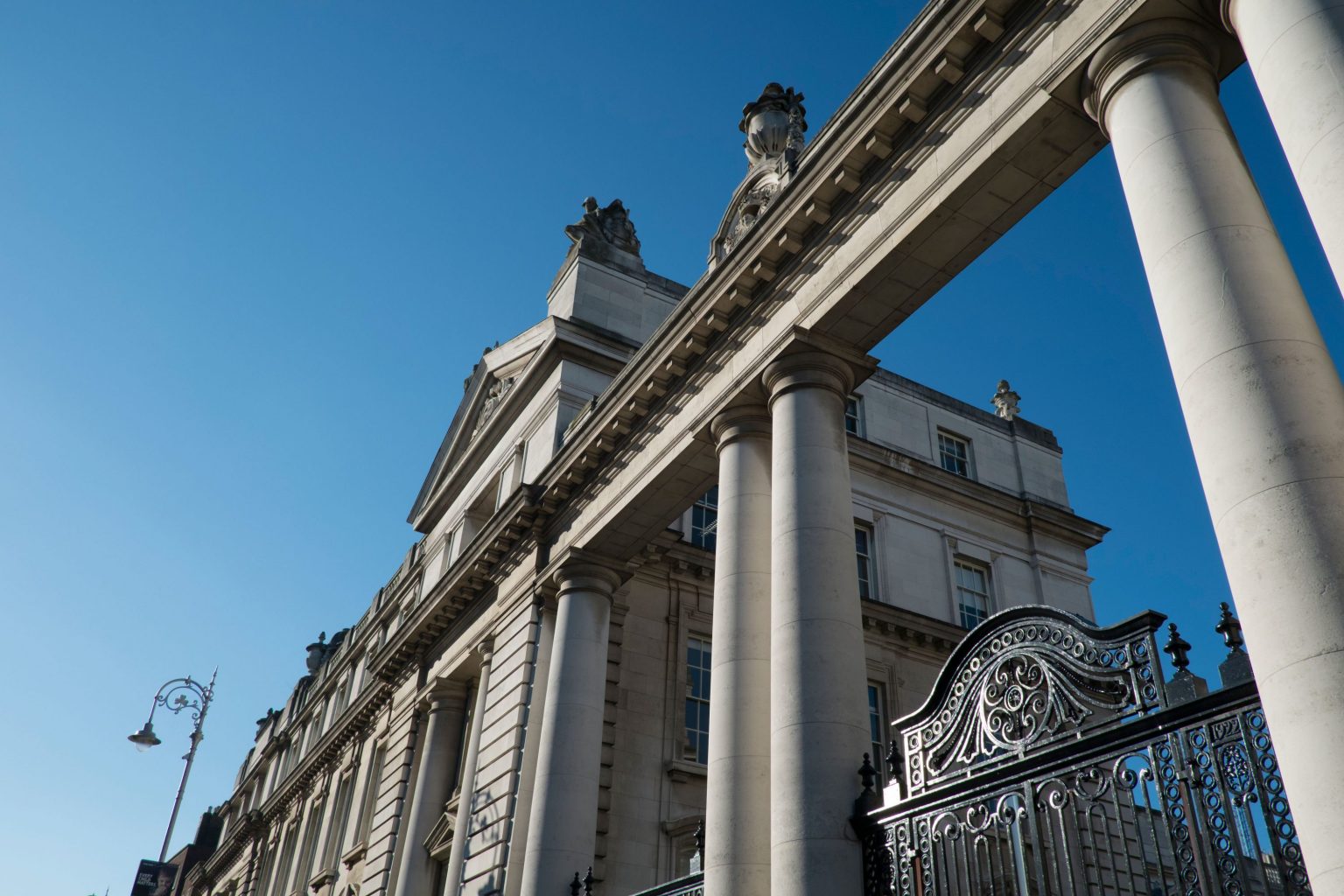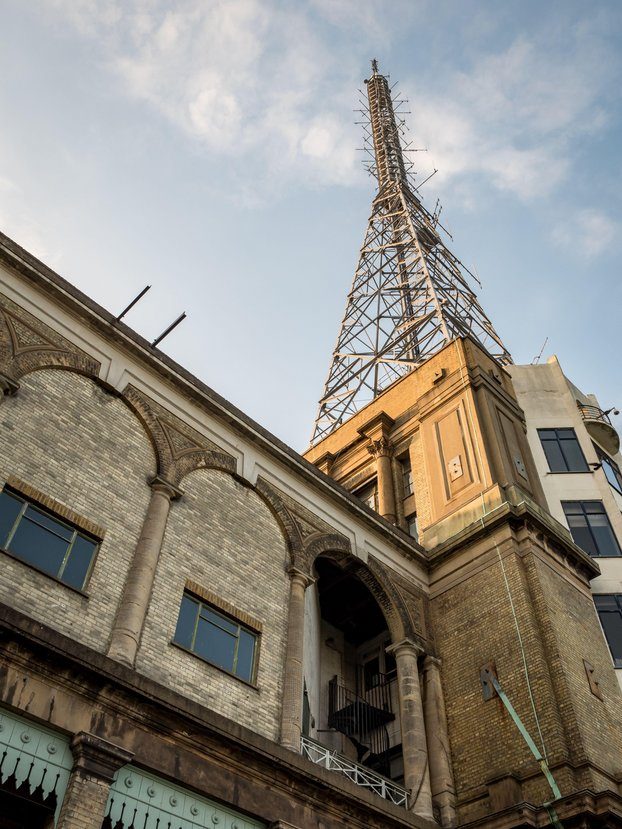Public Service. Private Good?
From rank incompetence to corrupt practices, procurement is under scrutiny in all walks of life. What needs to change if we are to get it right?
Think procurement is boring? Think again. In a world where the private sector delivers public services, procurement defines what government looks like at the sharp end – whether that is a disability benefits assessment or, notoriously, the effectiveness of track and trace. Indeed, when Marcus Rashford takes aim at the apparent quality of the free school meal ‘hampers’, ministers may respond, but the strike hits at the heart of government procurement.
No minister wants to explain why struggling families are getting substantially less food than a £30 hamper ought to provide. So how – and why – can it go so wrong? “Getting procurement right relies on those holding the public purse strings understanding where the process pitfalls are,” says procurement expert Peter Smith (St John’s 1976). As a former government procurement director, Smith should know, and recently addressed the subject in his latest book, colourfully titled Bad Buying – How organisations waste billions through failures, frauds and f***-ups.
The company would be paid for each call they answered. There was no incentive for the provider to do anything other than answer the phone
“The first pitfall is technical incompetence,” he says. “If I buy a laptop, I can specify exactly what I want. When local or central government are buying more complex goods or services, they need to be equally as specific about their desired outcomes. A great example is the city council that procured a call centre service for public feedback – and agreed a contract so the company would be paid for each call they answered. There was no incentive for the provider to do anything other than answer the phone – all they needed to do was say to the caller ‘We need more information; can you get it and call us back?’ and they’d doubled their money without solving anything.”
But even if you can clearly define a procurement process’s desired outcome, that outcome can be difficult to quantify in a contract, he adds. “For instance, what you really want from procuring a prison contract, for example, is for prisoners to be safe, have no chance to escape, to be positively reformed and less likely to reoffend. But while those outcomes are very clear, how do you turn them into a contract? You can promise to provide a certain number of guards and a basic standard of comfort and food, but the resulting contract doesn’t reflect the hoped-for outcomes.”
Dr Amy Ludlow, whose research has examined how marketisation and privatisation can improve quality of life for prisoners and staff, believes we should be thinking more ambitiously and creatively about public procurement in the new post-Brexit era. “The UK’s procurement rules have their origins within EU rules, so the starting point standards are non-discrimination and equal treatment, openness and transparency,” says Ludlow, Bye-Fellow in Law at Fitzwilliam College and a Senior Research Associate at the Institute of Criminology. “But, beyond that, I’m particularly interested in how we evaluate quality from a social perspective and put that into the procurement processes. Public procurement can be an opportunity to go beyond minimum standards – for the state to lead proactively and spend taxpayers’ money on things that we need in ways that also further social inclusion.”

“There are real opportunities to embed ethical purchasing. It doesn’t work in all contracts or settings – there obviously isn’t much scope for creativity when you just need to get as much PPE into the country as quickly as possible – but there are opportunities to be bolder within procurement law to further social policy through procurement processes. The law is complex, and maintaining transparency and non-discrimination is vital. But there are more possibilities within the law than are often recognised.”
The government is currently consulting on a green paper called Transforming Public Procurement – the main goal is to “speed up and simplify our procurement processes, place value for money at their heart, and unleash opportunities for small businesses, charities and social enterprises to innovate in public service delivery” – but Smith points out that flexibility and creativity also carry their own risks. “We have to be careful, however,” says Smith, “because including social value considerations does open opportunities for corruption.
“One proposal in the green paper is that you can reserve lower value contracts for local businesses. However, there is a danger that when a contract comes up, the local council might claim that the company with the best capability happens to be the construction company owned by the council leader. And if anyone complains, the council leader can say, ‘Well, we’re just following the rules – it’s a local firm, and maybe it is more expensive than other companies, but they didn’t match my company’s [unquantifiable] social value’. So this focus on social value and localism could be very positive, but caution is needed.”
The green paper could bring other challenges, too. Under the old EU rules, buyers could not take past performance into account when awarding contracts – but proposals to change that could lead to contracts always going to the same providers. “The current rules mean you can’t show bias to a company that’s done your last five jobs brilliantly – even though you know they would offer excellent value for money,” says Smith. “Equally, you’re not allowed to automatically reject any company that consistently does a terrible job. I’m sympathetic to Green Paper moves to change that but it could compromise a fair bidding process and could lead to corruption.
Sociologist Dr Mihály Fazekas (PhD Sociology 2014) is pioneering the use of big data to measure and analyse governmental corruption across Europe. “Systemic corruption in the UK is very rare compared with many other countries, but the system is slowly deteriorating. The current government has declared a policy decision to govern free of bureaucratic controls as much as possible – while at the same time a lot of institutions that would constrain the government, such as the Audit Commission, have been weakened or removed.
“Bringing in more discretion can work very well – or it can further cronyism,” Fazekas points out. “We haven’t yet found the balance – which is why the media has picked up the rotten apples. And, of course, Covid is the perfect storm, because emergencies usually require a quick response and normal controls are relaxed. But one thing that can keep public procurement on the right track, and something we have seen in the UK, is the level of public interest in it and its transparency. That’s vital in holding governments to account.”

David Connell, Senior Research Associate at the Cambridge Judge Business School (CJBS), is the author of Leveraging Procurement to Grow the Innovation Economy, an independent review of policy commissioned by Theresa May when she was prime minister, and published in 2017. “The US innovation economy is largely driven by federal agency procurement budgets, which they have deployed as informed customers to fund the development of the new technologies by US companies,” he says. “In contrast, the UK public sector generally operates by buying what is available ‘off the shelf’ at the time, and does not generally see it as its job to fund innovation by businesses.”
Connell is architect of the Small Business Research Initiative, established in 2009 to help government departments play this lead customer role better, and which now places R&D contracts with SMEs worth in total around £100m a year. His research at CJBS shows that lead customer innovation contracts like these have played a major role in the creation of some of the largest companies in the Cambridge cluster, speeding up time to market, reducing the need for venture capital, and thereby enabling founders to retain control and build a substantial business rather than having to sell out early.
“The second world war and the Covid crisis both demonstrated how much the nation’s innovators have to offer if government is allowed to enlist their support through procurement,” he says. “We have a huge amount to gain if this becomes normal practice, rather than just a mechanism to be used in time of crisis. It offers a win-win for both the public sector and our most innovative businesses.”
So what of the future? “The goalposts are definitely moving,” says Fazekas. “For decades procurement was about buying things as cheaply as possible. But now there’s strategic function. You can still be transparent, and you can achieve some goals, but there is a trade off. There are so many factors involved; it’s naive to think public procurement is a neutral value-for-money exercise. There’s more to it than that.”
Clearly, for the public to have faith in government money spent in their name, things have to change. Or as Marcus Rashford puts it: “We must do better. This is 2021.”
-

London 2012 Olympic stadia
The Good: London 2012 saw unprecedented success for Team GB in terms of medals (65 in all), but it was also a triumph in terms of its procurement strategy. The Olympic Delivery Authority created more than 8,000 subcontracting opportunities for the event’s construction project, delivering 50 inter-related venue and infrastructure projects on time and under budget. Key to the success was the use of a delivery partner – LOCOG – with experience in planning and implementing complex projects. As Jacques Rogge, then president of the International Olympic Committee, said: “London 2012 has already delivered on many of its promises and, by continuing to pursue others, we are optimistic that the people of London will benefit long into the future.”
Image: Queen Elizabeth Olympic Park in Stratford, London: John Baran/Alamy
-

Berlin Brandenburg airport
The Bad: The launch of a new airport in Berlin, planned to open in 2012, was supposed to reflect the growth of the city after the Wall coming down and its status as the capital of a reunified Germany. But it was beset by a series of crippling delays, accusations of corruption and a litany of failures and errors – including equipment and technology issues, poor workmanship, fired architects, construction flaws and poor cost estimation. The airport eventually opened its doors in 2020, billions of euros over budget, 14 years after construction started and 29 years after official planning was launched. According to Martin Delius, a former Berlin city politician who headed an extensive inquiry into what went wrong, those in charge decided “to give 30 to 40 contracts to smaller companies they thought they could pressurise into giving them lower prices. They built a very complex controlling system that didn’t work.”
Image: Flughafen Berlin Brandenburg BER: Juergen Held / Alamy
-

The Oireachtas printing press
The Bad: In 2018 the Irish government bought a new €808,000 state-of-the-art Komori printer for use in its legislature building (Oireachtas), but when the machine arrived, officials found that it would not physically fit into the building where it was to be used. Contractually unable to return the printer, it was moved into external storage for 10 months while builders pulled down walls and added structural strengthening – adding a further €236,000 to the bill – so that the printer would fit into its new home. As David Cullinane, a Sinn Féin TD, said: “It is all too common for a lack of planning and foresight on behalf of government departments to result in additional costs for the taxpayer.”
Image: Komori Lithrone G29 offset printing press: RZUK_Images / Alamy
-

BBC digital switchover
The Good: As the last analogue terrestrial TV signal was switched off at a small transmitting station in County Antrim in October 2012, the largest broadcast engineering project in history was completed. Delivery was coordinated by Digital UK, a single-purpose organisation that worked with government, regulators, broadcasters and equipment manufacturers, among others. The result was 100 per cent adoption of digital TV, on time, under budget and with minimal consumer disruption. Despite the fact that it was described by industry expert David Elstein as “more complex, with more potential for chaos and consumer revolt than any other civilian project in our history”, the project was lauded by Ed Vaizey, then Minister for Culture, Communications and the Creative Industries, as an “unqualified success”.
Image: Digital TV broadcast glitch: Igor Stevanovic / Alamy
-

‘Fat Leonard’ scandal
The Ugly: Described by the Washington Post as “perhaps the worst national-security breach of its kind to hit the Navy since the end of the cold war”, the case involved shipping support contractor Glenn Defense Marine Asia, a firm run by Leonard Glenn Francis, a Malaysian national known as ‘Fat Leonard’. Serving Navy officers were bribed to provide classified information in order to beat competitors and overcharge for services, leading to US federal prosecutors filing criminal charges against 33 people – including Francis himself, who pleaded guilty to being at the helm of a network that traded bribes of cash, luxury hotel suites, sex workers’ services, expensive cars, cigars and other gifts.
Image: US Navy’s Seventh Fleet flagship, USS Blue Ridge: Bryan van der Beek / Bloomberg / Getty Images







